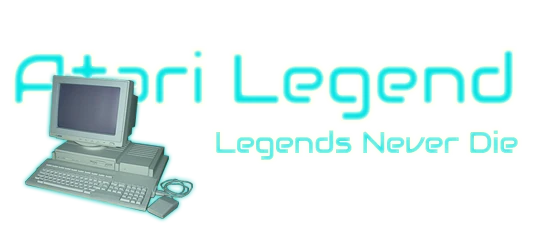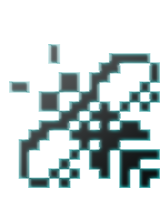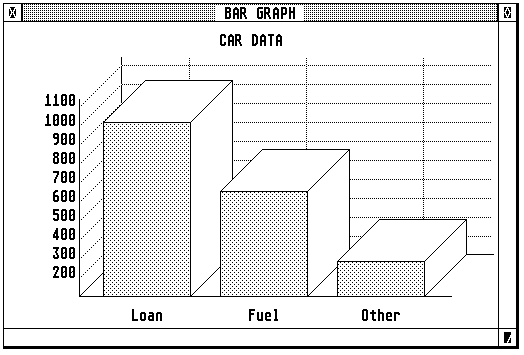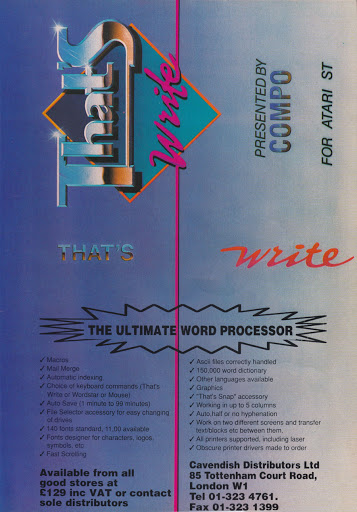







The Atari ST scene doesn't pay much attention to the more serious side of things, and that is a shame, because some really amazing business applications have their roots on the ST. In Germany, that ST was mainly sold as a business machine to begin with. A few weeks ago, I met Frank Schoonjans in the Atari ST Facebook group. Frank created the spreadsheet 3D-Calc on the Atari ST. This program was added to the 'Atari business pack', a software bundle by Atari BENELUX, together with That's Write and 'Astodat IV'. Globally, the program was distributed by Michtron. Join me as we take a deeper look...
There is currently no profile available in our database
There are currently no credits for this person in our database
1) Introduction
2) History
3) Serious programs
4) The history of 3D-Calc
5) The Business Pack
6) Michtron
7) Limitations
8) ST Format
9) Other programs
10) Earning a living
11) MedCalc
12) Life as a programmer
13) Programming languages
14) Gamers
15) Inspiration
16) Final words

3D-Calc graphical module includes: bar and line diagrams, pie chart, multiple bar and line graphs, stacked bar graphs, function graph, etc. Just like we have in Excel today.

That's Write was one of the best word processors on the Atari ST and was also featured in the Business Pack.
1) Frank, can you introduce yourself to the people who haven't heard of you?
I was born in 1956 in Ghent, and was keen on maths and physics in secondary school, so I became a teacher of mathematics, physics and non-confessional morals. Some may find that a strange combination but in fact it is a very classical one. I have worked in the University Hospital in Ghent, first in the administration, and from 1985 in a laboratory, which was a very stimulating environment.
2) What is your history with computers and how and why did you end up with an Atari?
My older brother Jan bought a Tandy TRS-80 Model I in the early 80ies and that was my first experience with a home computer. I bought a TRS-80 Model III when it became available in Belgium. It had a Zilog Z80 processor and 16 Kb (yes, 16000 bytes) of RAM. It did not have floppy disks, but data and programs were stored on cassettes. Nevertheless, it was a nice machine, with a good keyboard. I think it was about 40000 BEF. About 12 Kb was used by the system so there was only 4 Kb available for the user. After some time, I upgraded the memory and added another 16 Kb. The computer came with a lot of documentation and a good BASIC programming tutorial. I learnt programming from that. After some time, I purchased an Assembler kit. This came with very comprehensive documentation and I started programming in Assembler. Nothing spectacular. Some games like pong and Pac-man of course, which every programmer has done I guess, and a small word processor (very modest, just the principle of it). When programming in Assembler, I often wrote the program code on paper before entering it in the computer.
After I had some experience with IBM-compatible PCs in the hospital, the TRS-80 was not satisfying anymore so when I saw an Atari ST at a trade show, it was love at first sight.
3) When did you know you wanted to become a 'serious' programmer? (Programming applications, not games)
That was by the end of the 1988 when preparing the release of the first version of 3D-Calc, and I was also presented the opportunity to start working on programs (listed here) for another company.
4) Can you talk a bit about the history of 3D-Calc? What was it exactly and with what software of today can you compare it?
I purchased my Atari ST in 1987. I had little software for it, all the money was spent. I read in a magazine something about spreadsheets and I had that crazy idea that I could program that myself, without ever seeing a spreadsheet in action. I programmed it in Modula-2 which was a very modern language at that time. A first version, good enough to demonstrate, was finished in 1988. I showed it to Johan Lammens, who had a computer shop in Ghent. He agreed to commercialize it. It was the first for both of us.
It would be unfair to compare 3D-Calc with contemporary spreadsheet programs, but perhaps it was a little brother of Excel at that time.
5) 3D-Calc was bundled by Atari Benelux in a 'business pack', together with the word processor That's Write and the Dutch database program 'Astodat IV'. Can you tell us a bit about that? How did you get noticed by Atari and what did it take for them to include your software in their official pack?
I do not remember how they noticed 3D-Calc, but perhaps that was also thanks to Johan Lammens. I had 2 or 3 meetings with the boss of Atari Benelux. He was worried that I would release a new and better version after they released their package. I joked “3D-Calc cannot be improved”, but he took it seriously. Although there was some truth in my statement. The Modula-2 package could only handle a limited number of procedures, and I had reached that number and therefore I seemed to be stuck. Afterwards I reprogrammed a lot of procedures as subroutines, which lifted the limitation, so I could still improve 3D-Calc after it was licensed to Atari.
6) You sent me an order sheet for 3D Calc. It seems the program was distributed by Michtron outside the Benelux. How did that came about? I had no idea Michtron also released serious software as most of our readers will probably know them from the Microdeal games such as Time Bandit and Major Motion.
Michtron also had Master CAD and Personal Finance Manager (PFM). I do not even know Time Bandit or Major Motion.
In those days (1991) communication was mostly with letter and fax. So I wrote a letter to John Symes of Michtron together with a 3D-Calc floppy disk and he agreed to distribute it. He requested that 3D-Calc could read the data files of Personal Finance Manager so I programmed this into 3D-Calc.
Michtron made a nice boxed product from it. The box contained Program disk, a Junior disk and a Accessories and Utilities disk. The program disk contained the full-featured 3D-Calc program. The Junior disk contained a version of the software that could run on less RAM (520 Kb). The third disk contained a FreeRam accessory, a 3D-Calc desk accessory that enabled to use 3D-Calc while running another program. There was also a Terminal program so you could use 3D-Calc on a second ST or on an IBM-compatible machine.
I still have two boxes, with one still unopened and shrink-wrapped.
When John Symes ceased trading, he sold his software portfolio to Hi-Soft, which already had a spreadsheet, and they did not make any effort at all for 3D-Calc. I have actually never received any communication from Hi-Soft. That’s why it was renamed 3D-Calc+ when it was distributed by the magazine ST-Applications.
7) I have heard 3D-Calc is a fantastic program, but it suffered from bad scrolling. Why did you never solve this? Why did it not support GDOS? And why was there no support for color monitors?
Yes, I tested the program under STEEM this morning and scrolling is too slow. Looking at the source code now, I see where the problem is, but my knowledge of Atari ST programming is now too little to solve it.
I do not remember GDOS very well. I think that I did not have good developer documentation on it.
I always worked on a monochrome “high resolution” monitor. The Atari SM 124 monitor was high quality. I only had a color monitor for my ST in 1992, and I did not like the lower resolutions. Even for Flight Simulator I preferred the monochrome higher resolution.
Anyway I feel that, in color, the ST resolution was just too low for “productivity” software.
8) I see your program was reviewed by ST Format magazine and got a great score. How did it feel being recognized by the biggest Atari magazine back then?
Well, I had my share of bad reviews as well, for example in the Dutch Personal Computer Magazine. A good review is of course extremely rewarding and stimulating. Compare it with a standing ovation for a stage artist.
9) Did you create other software on the Atari apart from 3D-Calc?
I created Tracked!, a set of disk utilities, in the winter of 1991-1992. It contained a good disk defragmenter. You can download it here.
It was distributed by the Dutch magazine START, which unfortunately was discontinued little time after the release of Tracked!. But Tracked!, in its short lifetime and considering it was programmed in only a few months, was rather successful.
10) We all know Atari was not the most successful provider of home computers, not in the 80's and certainly not in the first half of the 90's. I wonder, could you make a living being an Atari programmer in Belgium?
I could not make a living from it. Perhaps game developers could.
As an independent software developer, you had to rely on distributors like Michtron or magazines like START to sell your product for you. They took quite a share of the profit. For 3D-Calc, I received 12.5% royalties from Michtron.
Today, I have 'cut out the middleman' and I sell the software directly to my customers. They order licenses and download the software from my website. Most of it is fully automatic.
11) If I understand correctly, 3D-Calc was ported to DOS and Windows during the 90's and renamed to MedCalc. When I look at your website, MedCalc has become a statistical software package for biomedical sciences. How did you end up in this branch of the industry and who are your customers today?
As I said in the beginning, I worked in a laboratory of the University Hospital in Ghent. I was doing some statistical calculations and started using my ST for this. That is why 3D-Calc already had some statistical features. In 1991/1992 somebody from a company producing laboratory equipment asked if I could write a program for ROC curve analysis (a statistical method to evaluate diagnostic power of a laboratory or clinical test). “Sure, I can do that”. So I converted the program to a DOS program, losing the graphical user interface. That was not so difficult since I already had the terminal program. Then after some years the program was again given a graphical user interface for Windows 3.1. This conversion, whilst learning to program Windows, took me about 10 months to complete. Remember I had a full-time job in the hospital; this was all done in my free time.
12) How was life as a programmer during the 80's compared to these days and which do you prefer?
You cannot compare it. We had no internet and all information had to be found in books and on Bulletin Board Systems (BBS). I had a 2400 baud modem, that is an amazing 2400 bits per second, with which you could dial into a BBS and download public domain software and documentation.
Today we have internet and all information available within seconds. Google is our best friend. On MSDN you find documentation on all Windows functions. On sites like stackoverflow.com you quickly find solutions for all sorts of software developer problems.
Another thing is user feedback. There was little user feedback at that time. From time to time I received a letter from a customer, but there were little error reports or feature requests. Today, I receive feature requests (and bug reports) regularly, it is wat pushes the software forward.
13) So MedCalc was programmed in a language called Modula 2, which was a successor of Pascal. I have never heard of this language before. Why did you choose this one? And which programming language(s) do you use today?
Modula-2 was quite a hype at that time. I did not choose it; it was just the first serious language with IDE on the ST that was available to me at that time. It is an amazing simple language.
On the ST I did some programming in assembler, but nothing serious.
Today, I still use Modula-2. But for MedCalc, I also use C, C++ and C#. The reports generated by MedCalc are HTML formatted so it also uses CSS and Javascript.
When I start a new program now, I use C++. Digimizer is completely written in C++. AutoSperm (a system for human semen analysis) was first programmed in Thoroughbred BASIC, then rewritten in Modula-2 and finally completely rewritten in C++.
14) I gotta ask, have you ever played computer games? And if so, what is your favorite? And are you still an Atari ST fan today?
The only game I regularly played on my ST was Flight Simulator. Although I do not play games, I must say I have great admiration for game developers. I have always regretted selling my ST somewhere in the middle 90s.
15) Who/What inspires you in life?
My imagination. All computer programs come from imagination.
16) Do you have any words of wisdom to share with the Atari community?
Say no to racism.
Thank you for your time Frank. It was great to finally interview someone from my home country ;-) Wish you all the best.
August 5, 2025 by grams88
Martin Brownlow is a living legend. Best known among ST fans for creating the beloved PD/shareware classics Grav and Grav 2, his games are still cherished by many to this day. From a young age, Martin knew he wanted to make games for a living...and he made that dream a reality. In fact, he’s still doing it today. Discover the full story and much more in this exciting new interview.
October 4, 2024 by grams88
Stacey Jamieson began his career at DMA Design, working on titles such as Oh No! More Lemmings, Walker, GTA and others. Over the years, he moved on to Electronic Arts (EA), where he contributed to major games like the Star Wars Battlefront series, Mass Effect, and Need for Speed. Today, he is the co-founder of Expression Games, where he continues to pursue his passion for game development. What an exciting career!
July 29, 2024 by grams88
Who doesn't love a good underdog story? Chris Sharp is a noteworthy apprentice of the renowned François Lionet, as he mastered the art of coding with the almighty STOS Basic. Chris crafted a few games for our cherished ST, including fan favourites like Magic Tomb and the Freaked Out series. Intrigued? Dive into our interview to revisit the era when game development could still be a solo endeavour.
July 16, 2024 by grams88
When Sega released its Master System, it came bundled with the game Alex Kid. To this day the game remains very popular, loved by many. One of those people is Terry Lloyd. More so, Alex Kid was the main inspiration for the Atari ST platform classic Axel's Magic Hammer. But that is just one of his many accomplishments. Terry has been around the block. Working as an artist and game designer at the beginning of the 80's for Gremlin Graphics, he then moved on to Core Design, which he helped get off the ground. During the 90's he contributed to founding the company Malibu Interactive. On the Atari ST, Terry's resumé include Dynamite Dux, Car-Vup, Rick Dangerous 1 & 2, Torvak the Warrior, WarZone and many more. Read all about this veteran of the games industry in this exciting interview.
April 18, 2024 by grams88
It doesn't always have to be about computers, coding and graphics. Adrian Powell, the artist behind the original Lemmings game, crafted all its artwork, including box art and promotional materials. His passion for painting lemmings has persisted over time and he is still painting lemmings to this day. Powell's work remains influential and has helped selling millions of copies of this classic (ST) game.
Currently 0 registered users online
In the past 24h there were 4 registered users online